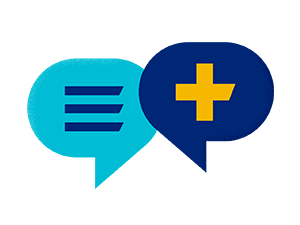How much do Medicare Part D prescription drug plans cost?
What is my cost share with my Medicare prescription drug plan?
Even if you have a Medicare prescription drug plan, also known as a Part D plan or PDP, you still need to pay something. When you're comparing plans, be aware of these out-of-pocket costs:
Monthly premium
A monthly premium is the fee you pay to the plan in exchange for coverage. Each Medicare prescription drug plan has a set monthly premium. Generally, higher-premium plans will have more coverage and lower deductibles or copayments, and lower-premium plans have less coverage with higher deductibles or copayments.
Annual deductible
An annual deductible is the amount you pay out-of-pocket for your prescription drugs before your Medicare prescription drug plan begins to pay. It's a pre-set, fixed cost. Be aware that not all plans have an annual deductible.
Copay
A copay (also known as a copayment) is a kind of cost sharing. You pay a predictable, set amount for a covered drug each time you fill a prescription. The actual cost will depend on which tier your drug is in. In most situations, generic drugs will have a lower copay than brand-name drugs.
Coinsurance
Coinsurance is another kind of cost sharing you may have. You pay a percentage of the cost for a covered drug each time you fill a prescription. Your plan pays the remaining amount owed. The percentage will vary, depending on your plan.
Ready to shop?
Find Medicare prescription drug plans in your area
How do my drugs and drug tiers affect what I pay with Medicare Part D?
All Medicare Prescription Drug plans have a standard level of prescription drug coverage. This coverage is set by Medicare. However, plans differ in the specific drugs they cover and how they divide these drugs into tiers. The tiers determine what you’ll pay.
Every Medicare Part D plan has a formulary, or drug list, that shows all the brand-name and prescription drugs it covers. Usually, drugs in lower tiers will cost less and drugs in higher tiers will cost more.
Below is an example of a tier structure for a typical Medicare prescription drug plan. The actual tier structure for the plan you choose may vary.
Tier 1
Lowest copay
Lower-cost, commonly used generic drugs
Tier 2
Low copay
Many generic drugs
Tier 3
Medium copay or coinsurance
Many common brand-name drugs, called preferred brands, and some higher-cost generic drugs
Tier 4
Coinsurance
Non-preferred generic and non-preferred brand-name drugs
Tier 5
Coinsurance
Unique and/or very high-cost brand-name and generic drugs
How do the coverage stages change what I pay?
Each Medicare prescription drug plan has three coverage stages. Your out-of-pocket costs will vary throughout the year, depending on which stage of coverage you're in.
Stage 1: Annual Deductible
- If your plan has an annual deductible, you pay the entire cost of your prescription drugs until you reach the annual deductible limit.
- If your plan doesn't have a deductible, your coverage starts with the first prescription you fill. This means you go directly to Stage 2.
Stage 2: Initial Coverage
- You pay a copay or coinsurance for your prescription drug, and the plan pays the rest.
- You stay in the Initial Coverage stage until you (and/or others on your behalf) have spent $2,000 in drug costs.
Stage 3: Catastrophic Coverage
- When your out-of-pocket costs reach $2,000 in 2025, you enter the Catastrophic Coverage stage.
- You will pay $0 for Medicare Part D-covered drugs in the Catastrophic Coverge stage.
How the Inflation Reduction Act (IRA) affects Part D coverage
The federal Inflation Reduction Act includes support for people with Medicare coverage. Changes include:
- Insulin available at $35/month per covered prescription
- Access to vaccines covered by Part D and recommended by the Advisory Committee on Immunization practices (ACIP) without cost-sharing
- Expansion of the low-income subsidy program (LIS or “Extra Help”) under Medicare Part D to 150% of the federal poverty level starting in 2024
- A yearly cap ($2,000 in 2025) on out-of-pocket prescription drug costs in Medicare
- Fewer coverage stages: Deductible (if included in the plan), Initial Coverage and Catastrophic Coverage. No more Coverage Gap or “donut hole”
- Medicare members with Part D coverage can spread their prescription drug out-of-pocket costs into monthly payments over the course of the plan year
How do I choose a Medicare prescription drug plan that's right for my budget?
There’s a lot to weigh when it comes to comparing costs and coverage. Think of your situation while considering the following.
Drug list/formulary
Use the button below to look at a specific Medicare prescription drug plan's formulary (drug List) to see if the drugs you take are included. Keep the following questions in mind:
- Do you take any high-cost, specialty prescription drugs?
- Are you willing to take a lower-cost generic alternative to a brand-name prescription drug?
- How much will your drugs cost?
Pharmacy networks
Pharmacy networks can offer prescription drugs at reduced rates to save you money. This is because they contract with your Medicare prescription drug plan. If you fill prescriptions outside the network, it may cost you more.
- If your plan includes a pharmacy network, is your regular pharmacy included?
- If not, are you willing to use a mail order pharmacy or a pharmacy chain?
Enrollment window
If you miss your Medicare initial enrollment date and enroll later, you may have to pay a late enrollment penalty. The late enrollment premium penalty is 1% of the average monthly premium multiplied by the number of months you were late. You pay this penalty for as long as you're enrolled in the plan.
However, if you can prove you had creditable drug coverage or qualify for the Extra Help program (see below), you may be able to avoid the penalty.
Total out-of-pocket costs
Review each plan's monthly premium, annual deductible, and copay or coinsurance. Then ask yourself if the costs fit within your budget.
Can I get help covering Medicare prescription drug costs?
The Extra Help program — run by the Social Security Administration — is designed for Medicare beneficiaries with limited income and resources. It's also known as the Part D Low-Income Subsidy (LIS). This program helps cover prescription drug plan premiums, annual deductibles and copays for people who qualify.
Additional Medicare prescription drug plan resources
Ready to shop?
Learn about types of prescription drug coverage options in your area.
Need more information?
Compare the types of Medicare prescription drug plans offered by UnitedHealthcare.
Supporting you through your Medicare journey
Chat with UnitedHealthcare
Chat is currently unavailable.
Please try again later.
Find a plan
Meet with us
Make an appointment with a licensed insurance agent in your area.

